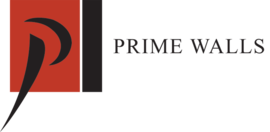All You Need To Know About Textured Wallpaper

When buying wallpaper online, it can be hard to get an accurate representation of the actual product. After all, the wallpaper pattern is typically shown as a flat image, such as the one below.
However, wallpaper isn’t just about its color or pattern. Some types of wallpaper feature a textured surface that adds a different dimension to it. In this article, we’ll be talking about why it’s so important to get a first hand look at wallpaper before buying it, and the different types of textured wallpaper.
Ordering Wallpaper Samples Is Important!
At Prime Walls, designers can order wallpaper samples to get a look at a product before purchasing the entire roll. Ranging from 8 ½” x 11” to 20” x 20” in size, these wallpaper samples are a cost-effective, hassle-free way to see the actual product and to compare it with other wallpaper patterns. Not only do wallpaper samples allow designers to see the accurate color and pattern scale, but they’ll also be able to touch and feel the product.
One of the most common misconceptions about wallpaper is that the surface texture is completely smooth like paper. That’s definitely not the case! While some wallpaper substrates or materials do feature a smoother surface, there are others that are much rougher or more heavily textured. This tactile element of wallpaper is often difficult to showcase online through a flat image, so ordering wallpaper samples is the best way to see and feel the wallpaper product.
Visual Textured Wallpaper
Now, let’s take a look at different categories of textured wallpaper, starting with patterns that represent textures through their visuals only. These wallpapers generally feature a smoother, flatter surface. The look and feel of a textured surface is made possible through the use of color, shadows and highlights, and the actual design itself. A popular category of visual textured wallpaper is faux effects wallpaper, where designers can find trendy patterns such as brick, wood, and concrete.




Visual textured wallpaper patterns, such as the brick one above, create the look of a 3D image or appearance while maintaining a flat surface. In general, designers can find visual textured wallpaper when looking at wallpaper materials such as non-woven and vinyl.
Light Textured Wallpaper
A step above visual textures is light textured wallpaper. These feature a raised surface that has a distinct or defined tactile finish that physically differentiate it from traditional wallpaper with a flatter or smooth surface. These can include certain grasscloth or natural wallpaper, cork wallpaper, textile wallpaper, glass bead wallpaper, and flock wallpaper.
Within this category, designers will find a wide variety of patterns and textures to choose from. Cork wallpaper, such as the black and taupe pattern featured above, has a predominantly smooth surface with various craters and indents scattered across the entire wallpaper. The beige basket weave grasscloth has a more structured pattern, creating an even textured surface. The textured elements of glass bead wallpaper come from the small beads attached to the wallpaper surface. This creates a raised surface in areas where the glass beads are attached.




Highly Textured Wallpaper
Highly textured wallpaper can be found in similar wallpaper material categories, such as grasscloth or natural wallpaper, textile wallpaper, and glass bead wallpaper. What makes this different from light textured wallpaper is that highly textured wallpaper features an even more pronounced textured surface. In most cases, the textures are very obvious when looking at the wallpaper pattern. With less subtlety, highly textured wallpaper feature more raised surfaces and use of materials to create a heftier tactile look and feel.


Certain grasscloth patterns fall into this category, such as the gold and green natural wallpaper above. It uses thicker fibers to create a more distinct textured look. Textile wallpaper, such as the blue and white pattern above, fully incorporates the textured finish into its pattern to create an interesting, eye-catching appearance. Highly textured wallpaper has a courser or rougher finish than light textured wallpaper.
Heavy Layered Textured Wallpaper
Last but not least, we have heavy layered textured wallpaper. These are wallpaper products that feature a highly dense, textured finish that’s much more tactile and noticeable than the other categories. With a much rougher surface, heavy layered textured wallpaper is thicker than traditional wallpaper because of the materials on the surface.


One of the most common types of heavy layered textured wallpaper is mica wallpaper. Mica wallpaper features a highly textured surface with a dense packing of small mica stones. This natural wallpaper is environmentally friendly but also has a glamorous aesthetic as well. Some mica chips have shiny surfaces, which subtly reflects light, creating a soft shimmering look.
While most natural wallpapers fall into the light or highly textured wallpaper category, there are some that are on the heavier side. Some grasscloth wallpapers use thin strips of wood, which not only contributes to the thickness of the product, but also elevates the textured elements even further.
Caring For Textured Wallpaper
Certain textured wallpaper work better in specific environments. Wallpaper products that feature more fragile materials, such as grasscloth and textile, are more appropriate for dry and low-traffic spaces. Our wallpaper rolls feature different symbols that will tell designers more about how to care for a specific wallpaper product. For more information, be sure to check out our article, How To Read Wallpaper Information and Hanging Instructions.
Where To Shop For Textured Wallpaper
An easy way to shop for textured wallpaper is to look at wallpaper materials for specific categories. As mentioned above, certain wallpaper materials can result in a more textured surface. As always, ordering samples is the best way to judge the texture of the actual wallpaper product. For digital prints, Prime Walls offers over 50 different substrates, each with their own unique surface texture. Designers can view examples of each substrate here.

